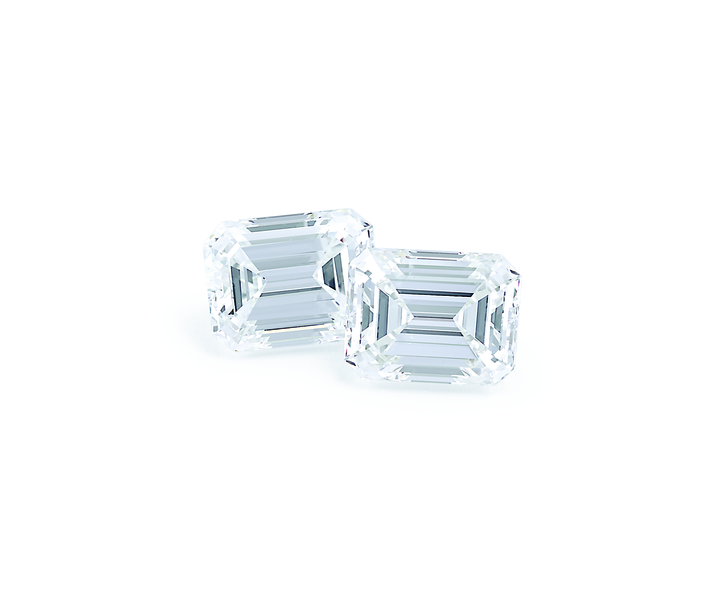Behind every beautiful diamond is a long journey of processing it with a stone grinder. It is his skill, feeling, and experience that determine what shape and cutting method he chooses for a given stone.


BRILLIANT CUTTING
Brilliant is often considered the "normal" or "common" cut of a diamond, as 95% of all diamonds are cut to a brilliant shape. The reason why the brilliant cut is so popular is mainly due to the mathematically calculated proportions, which allow maximum use of the incident light.
All the rays penetrate the inside of the stone and are reflected back, creating "fire" and brilliance. Fire is the name given to the splitting of white light into spectral (rainbow) colours, which occurs by bending light rays.
HISTORY
The history of the diamond is exceptionally rich and goes back to the distant past of the 13th century. The first form was the double pyramid, also known as the octahedron. The top of the cut is flattened so the diamond has four facets at the top and bottom. Then someone got the idea to grind off the sharp corners, which gave the diamond a rounder shape overall. This cut has been modified and modified in various ways.

The main and turning point for the diamond was in 1919, when the cutter Marcel Tolkowsky published his calculations of the modern diamond cut. Tolkowsky designed angles and proportions that yielded a visibly shallower crown and pavilion, a perfectly round outline, and a base that tapers to a tip. A brilliant-cut diamond has excellent brilliance and fire and always has 58 facets.
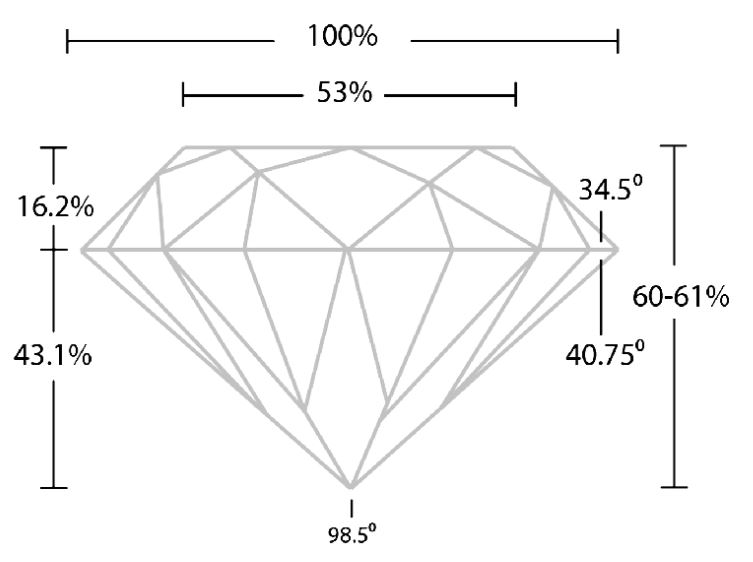
BEST FITS
For any style of ring, be it solitaires or halo rings! The round shape is the most popular diamond shape, mainly due to its best ability to reflect light within the gem. You can never go wrong with brilliant, it's a classic that never gets old!
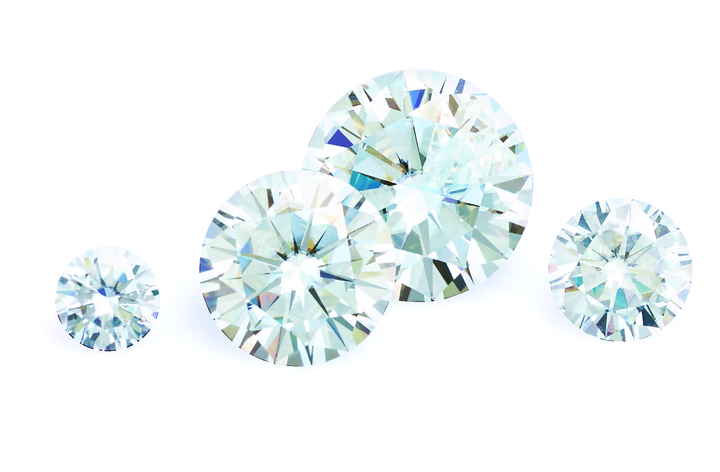
THE DIFFERENCE BETWEEN A BRILLIANT AND DIAMOND
Previously, diamonds were referred to as brilliants because other forms of diamonds were not available or financially unaffordable for mortals. Due to the influence of English and the concept of "Diamonds are forever", we started to talk more about diamond jewellery than brilliant jewellery. So what is the difference between them? A diamond is a raw material, a brilliant is a cut.
PRINCESS
Today's second most popular shape, after the diamond, is the princess cut. Although he is a relatively young cutie, he has already won many hearts. Many women adore this cut because of its beautiful, simple and timeless design. This gemstone shape was created by Betazel Ambar and Israel Itzkowitz in 1969. It gained popularity mainly in the 1980s and 1990s.
APPEARANCE
It is a square cut with sharp edges and 59 facets. When you look at this cut from above it has a square shape with a visible X. From the side it looks like an inverted pyramid. Thanks to this, the princess cut has become a real classic over the years. It has also gained popularity among men, because this beautiful, geometrically clean shape looks more interesting than a round brilliant cut.
BEST FITS
In many styles of rings, however, this gemstone shape stands out most in solitaire rings or halos. Whatever style you choose, be sure to choose a ring with well-placed prongs holding the corners of the gemstone. Due to the sharp cut of the stone, these areas are most susceptible to damage or chipping. Although this cut is very popular in engagement rings, its versatility makes it look great in all jewellery. The princess is beautiful in diamond rings, bracelets, earrings and necklaces. You may also recognise square diamonds from tennis bracelets, for which this cut is the most beautiful shape!
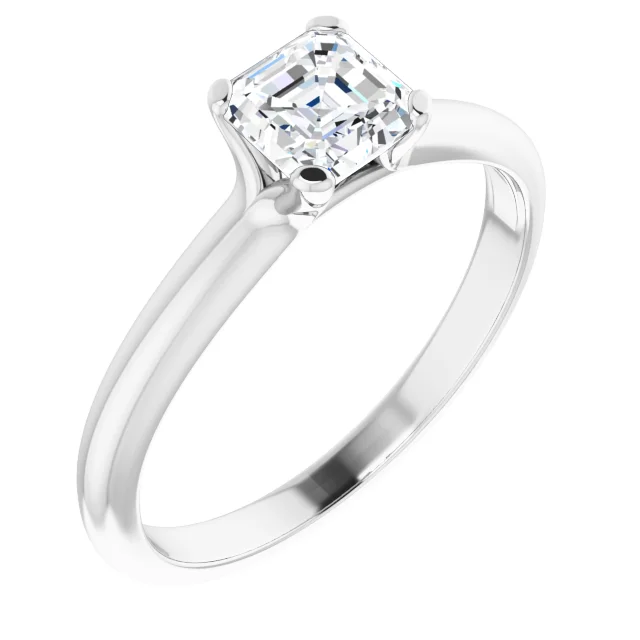


CUSHION
HISTORY
This diamond shape has its roots as far back as the 17th century, when its predecessor "The Old Mine Cut" was created. The pillow as we know it today was created thanks to a technology discovered in the 19th century that allowed for more precise round cuts. Today, an even newer method is used to cut this diamond shape, which adds an additional set of facets to the pavilion, or cut (bottom) of the diamond. You can recognise the pillow at first glance thanks to its curved sides and rounded corners.


APPEARANCE
The shape resembles a pillow, hence the name. It is a combination of a princess and an oval, with rounded corners and usually 61 facets. This cut is more robust than, for example, a brilliant. This is called the crushed ice effect. We offer this modern shape in a square or rectangular shape.
OUR TIP
The cushion is a great choice if you are looking for an economical yet beautiful diamond!
BEST FITS
For any engagement ring. It is historically associated with vintage halo rings. Thanks to the halo, the beauty of this cut will stand out even more! It will be appreciated mainly by ladies who prefer non-traditional or vintage jewellery, in which the shape of the pillow stands out best. The cushion is now very popular thanks to Megan Markle's engagement ring, who received a diamond ring with this very cut!
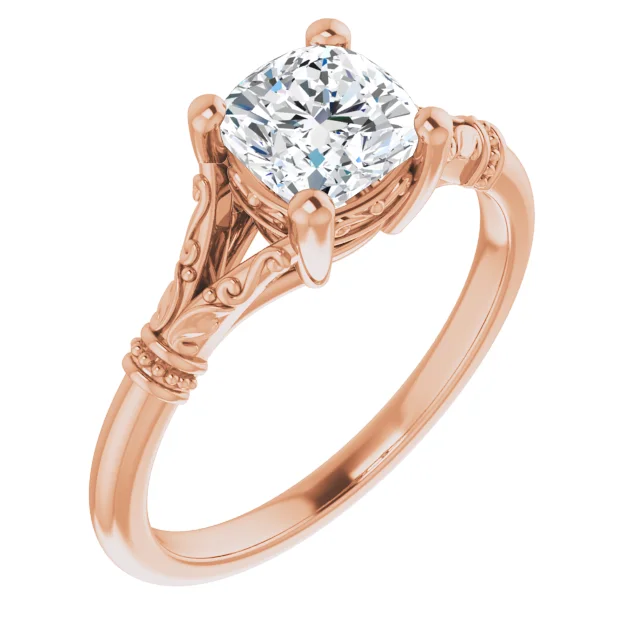

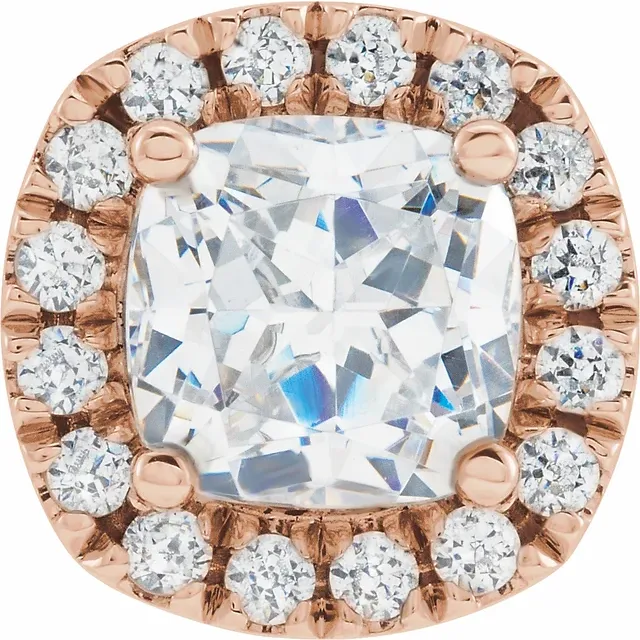
SMARAGD, EMERALD
HISTORY
This shape was discovered as early as the 15th century and is one of the oldest diamond cuts. It gained the greatest popularity in the 20s of the 20th century thanks to the distinctive decorative style of Art Deco, which also influenced the trends of engagement rings. It is named "Emerald" because of the emerald that stands out most in this cut and is so closely associated with this gem that the cut is named after it.
APPEARANCE
The emerald-cut diamonds have stepped facets, resembling stairs, just like the Asscher. Emerald has 57 facets. They are divided into 25 on the top, 24 on the bottom and 8 facets on the round. The proportions of the emerald cut are most often 1:5, which makes the gem rectangular. This ratio is very common in green emerald rings.
OUR TIP
Production losses with this cut are very low, which is why this diamond cut is very popular even for a lower price. Due to the large scale, inclusions and impurities can be seen with the eye, so it is ideal to always choose a clean and colourless diamond.
BEST FITS
To the already mentioned Art Deco rings, which you can also find in our offer. In addition to the vintage style of rings, this stone shape stands out perfectly in simple but beautiful solitaires. This shape elongates a woman's fingers, and any piece of jewellery with an emerald cut looks very elegant. The emerald cut creates the most beautiful and elegant engagement and wedding rings. It is no wonder that celebrities such as Angelina Jolie or even Kim Kardashian love diamond rings with an emerald cut.

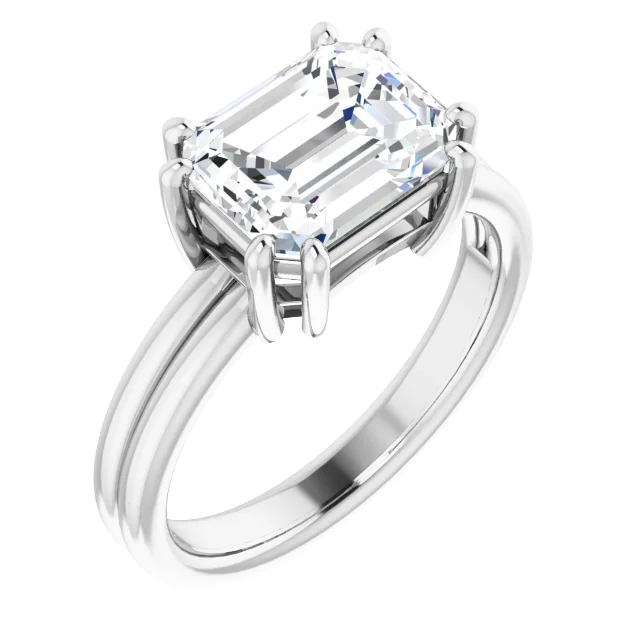
ASSCHER
HISTORY
This grind was invented by the Dutch grinder Joseph Asscher in 1902. It is very similar to the emerald stepped grind. This shape became very popular after the First World War mainly due to the Art Deco art movement, as well as the emerald cut.
APPEARANCE
Asscher looks very similar to an emerald cut. However, there are important differences between these cuts. Asscher is square and has 74 facets, while emerald cut is rectangular and has 57 facets. Both have large step-like facets on the top and bottom of the gem. However, the corners of an Asscher are rounder than those of an emerald cut diamond. Asscher therefore looks round. This gives the diamond a great sparkle. Diamond experts therefore compare the Asscher to a mirrored labyrinth of endless corridors.
BEST FITS
For vintage style rings, in which the unique open facets of this gemstone shape stand out. Asscher also looks great in halo rings as it doesn't have a high sparkle on its own. You get it if you surround it with small diamonds. In addition to rings, Asscher is perfect for tennis bracelets or brooches.
OUR TIP
If you decide on Asscher, don't forget the important details when buying! By having a large panel (top of the diamond), the Asscher allows the owner to see directly into the diamond. Therefore, it is important to choose a very clean diamond, at least VS2, otherwise you will see inclusions and impurities with the naked eye. When it comes to colours, we also recommend choosing a lighter diamond colour. The brighter the colour the better.

.png)
